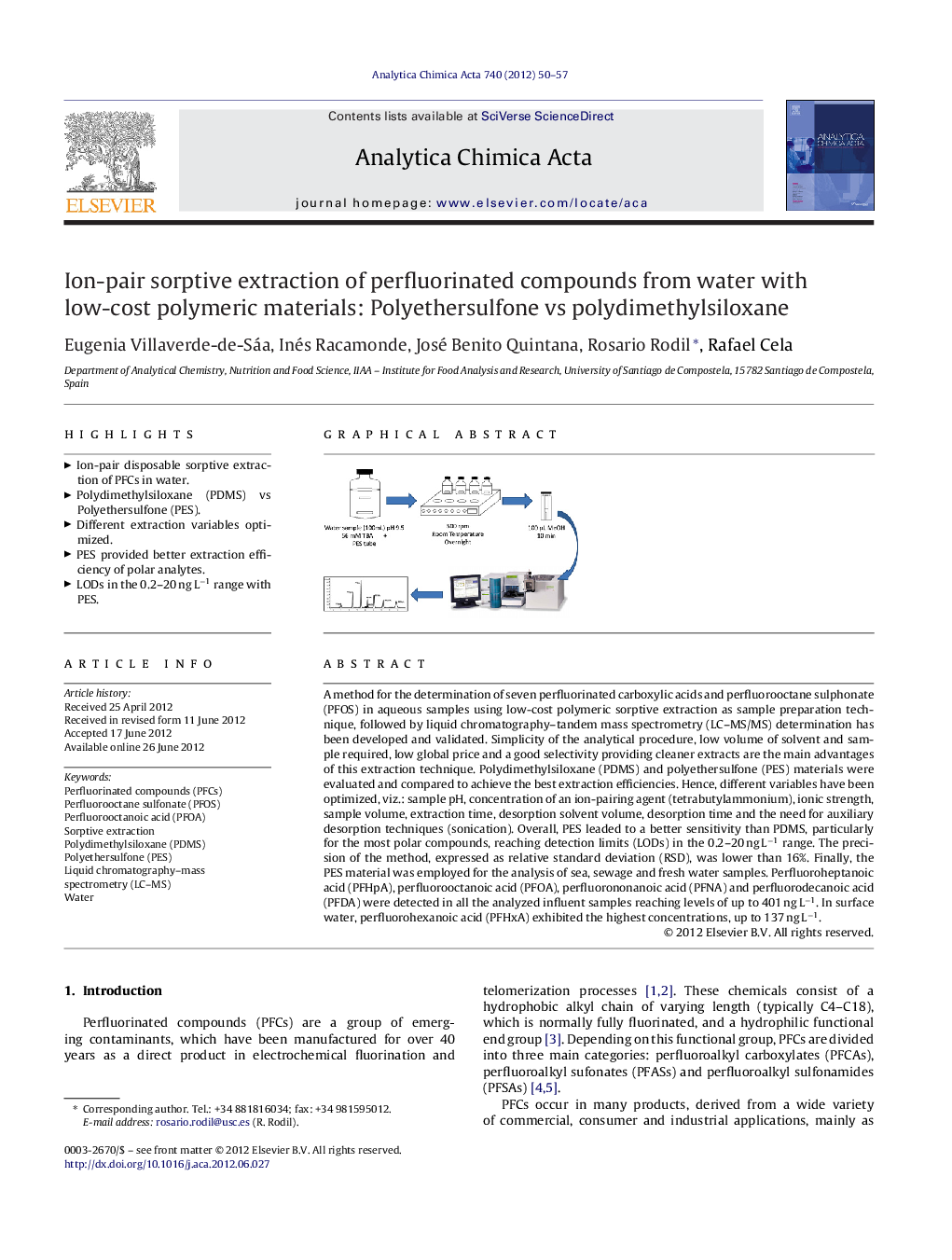| Article ID | Journal | Published Year | Pages | File Type |
|---|---|---|---|---|
| 1165825 | Analytica Chimica Acta | 2012 | 8 Pages |
A method for the determination of seven perfluorinated carboxylic acids and perfluorooctane sulphonate (PFOS) in aqueous samples using low-cost polymeric sorptive extraction as sample preparation technique, followed by liquid chromatography–tandem mass spectrometry (LC–MS/MS) determination has been developed and validated. Simplicity of the analytical procedure, low volume of solvent and sample required, low global price and a good selectivity providing cleaner extracts are the main advantages of this extraction technique. Polydimethylsiloxane (PDMS) and polyethersulfone (PES) materials were evaluated and compared to achieve the best extraction efficiencies. Hence, different variables have been optimized, viz.: sample pH, concentration of an ion-pairing agent (tetrabutylammonium), ionic strength, sample volume, extraction time, desorption solvent volume, desorption time and the need for auxiliary desorption techniques (sonication). Overall, PES leaded to a better sensitivity than PDMS, particularly for the most polar compounds, reaching detection limits (LODs) in the 0.2–20 ng L−1 range. The precision of the method, expressed as relative standard deviation (RSD), was lower than 16%. Finally, the PES material was employed for the analysis of sea, sewage and fresh water samples. Perfluoroheptanoic acid (PFHpA), perfluorooctanoic acid (PFOA), perfluorononanoic acid (PFNA) and perfluorodecanoic acid (PFDA) were detected in all the analyzed influent samples reaching levels of up to 401 ng L−1. In surface water, perfluorohexanoic acid (PFHxA) exhibited the highest concentrations, up to 137 ng L−1.
Graphical abstractFigure optionsDownload full-size imageDownload as PowerPoint slideHighlights► Ion-pair disposable sorptive extraction of PFCs in water. ► Polydimethylsiloxane (PDMS) vs Polyethersulfone (PES). ► Different extraction variables optimized. ► PES provided better extraction efficiency of polar analytes. ► LODs in the 0.2–20 ng L−1 range with PES.
